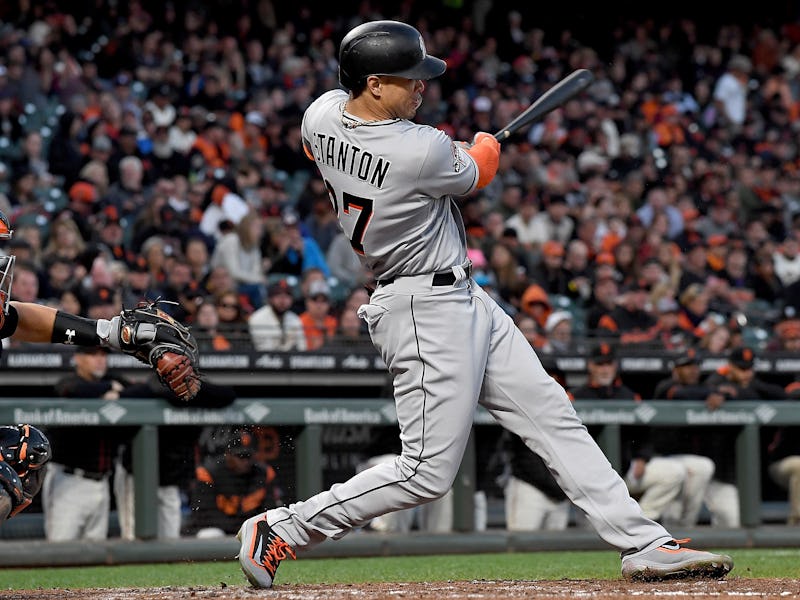
As Miami prepares for the MLB Home Run Derby, fans and commentators alike are wondering not just who will hit the most home runs, but also who will hit the longest ball. At the 2016 Home Run Derby, Miami Marlins’ Giancarlo Stanton, a league favorite, hit a record-breaking 61 homers. But this June, the New York Yankees’ slugger extraordinaire Aaron Judge hit a 496-foot dinger, one of the longest ever measured.
With these behemoths facing off, analysts are predicting an exciting contest on Monday, not to mention some big numbers from the 2016 season overall, as more and more players are hitting consistent home runs. Ultimately, the winner will be the player that best contends with the conditions that science serves up.
Giancarlo Stanton is a seriously huge dude. But is it enough to win the Home Run Derby?
Muscle Mass
Let’s start with what might seem like the most obvious factor: muscle mass. Stanton (6’6” and 245 pounds) and Judge (6’7” and 282 pounds) are seriously big dudes, but not all home run hitters are quite so huge. The average weight of Home Run Derby winners, based on their official statistics, is only about 200 pounds. But with record-breakers in recent years showing a strong upward trajectory in mass, perhaps these huge dudes will be at a strong advantage. And with Judge tipping the scales more than any Home Run Derby winner in history, he might be the one to bring home the win.
Swing Control
Beyond a player’s body, swing control is crucial. In recent years, players and analysts have become obsessed with the “launch angle” of baseball hits. In 2016, FiveThirtyEight reported that most home runs are hit at a launch angle of about 25 to 30 degrees, with launch velocities of about 100 miles per hour. It makes sense that a fast bat speed is important to hitting home runs, but the angle is absolutely crucial. Too low, and it’s a ground ball, but too high, and the ball will pop up and never make its way out of the field.
Humidity
Some factors are outside of players’ control.
“The ball goes farther in muggy, warm weather than it does in dry weather,” Syd Mandelbaum, who invented the first system for measuring home runs, tells Inverse. This may sound counterintuitive, but it’s surprisingly simple: On days with higher humidity, there is usually lower barometric pressure. This means that on a clear day, the higher ambient air pressure might keep the ball from traveling as far as it could on a humid day.
With the 2017 Home Run Derby taking place in Miami in, this could mean some long homers are in store.
“There’s a good chance that, other than when they played in Colorado, I believe you’re going to see some of the longer home runs because of the higher humidity and lower barometric reading,” says Mandelbaum.